Submitted Review
Elemental
‘”Heal Country!” – the call to action to protect and preserve.’
Elemental is curated by Jenna Lee, also an artist and winner of the Wandjuk Marika 3D Memorial Award at the 2020 National Aboriginal and Torres strait Islander Art Awards. Although her visual art is not included in this presentation there are observable ties between her own practice and the curatorial premise of this show. Lee, a Larrakia and Wardaman (NT), Karajarri (WA) woman (with Asian and Anglo-Australian heritage) addresses connection to Country through the classical theme of the four elements: Earth, Air, Water, Fire – and through broader issues of cultural connection, not just to the concept of Country as earth, but encompassing seas, rivers, air, and elemental fire as symbolic ritual and healing power, responding to the 2021 NAIDOC theme of ‘Heal Country!’
On show is the work of seven (mostly emerging) First Nation artists: Cassi Leatham (Taungurung), Edwina Green (Trawlwoolway), Shahn Stewart (Yorta Yorta), Iluka Sax-Williams (Torres Strait and Taungurung), Lisa Waup (Gunditjmara, Torres Strait), Mia Boe (Badtjala) and Moorina Bonini (Yorta Yorta, Wurundjeri-Woiwurrung).
The written material gives weight, focus and meaning to the works on display; perhaps outweighing the visual components themselves. Not an uncommon misstep in recent years with curatorial programs in many visual art spaces, perhaps influenced by the bureaucracy of submission processes and habits of academia. The presentation is sparse and not as cohesive as it could potentially have been. Singular examples of an artist’s work, wall mural and video works, although interesting, altogether takes a different direction than one would expect from a show at (and all about) Craft. However, an important aspect to this group exhibition is to be introduced to the work of young artists, and the prospect of observing how their practices might develop with experience.
Bonini’s and Boe’s works speak directly to traditional fire management practices and their role in healing and caring for Country. Knowledge that has come to the fore in mainstream news in recent years as devastating bushfires become more frequent and more deadly. Sax-Williams possum pelt The Wilnj Element introduces fire as a source of materiality or mark-making, literally the heat of fire as medium.
Earth and Water are both clearly referenced through medium and subject. Green utilises bull kelp, used to create water vessels in pre-colonial Tasmania; a material I first encountered in the refined work of Nanette Shaw, a Tyereelore Elder. A material made possible from sea water to create vessels made to carry fresh water. Leatham exhibits a small collection of vessels. Made from the earth but unrelated to traditional ceramic artistry, they appear like ritual objects, organic mediators made of clay, botanic and animal materials called Darril Mon Daanak (clay healing pots). Or, rather than made, they feel born from the earth, reinforced by the visual perspective of looking down upon them on their low plinth as if magically erupting from the ground.
So, what of Air? Senior artist Lisa Waup’s Blue Bird stands out as an object of masterly execution and beauty. A small woven vessel of feathers, seed, vertebrae, thread, wire, and presented as a precious objet d’art under a protective glass dome. Interestingly, she has utilised peacock feathers as well as native materials, and notes varied historical cultural mythologies of the peacock symbolism including protection, vision, spirituality, et al. Feathers from the bird, whose home is the space of earth and air. Reflecting upon Leatham’s pots again: containers of native scents and earth materials, but essentially vessels of air – healing air, designed to breathe into one’s body.
Taking central position are Waup’s three works on paper from her Continuity of Protection series. Nicely tying presentation and curation together through material and subject, highlighting the importance of materiality to artistic and cultural expression. Handmade paper and ochre pigments can only exist because flora, earth, water made it so. The geometric screenprinted designs referencing shields as literal and symbolic protectors.
‘Heal Country!’ – the call to action to protect and preserve is to ensure it remains, in turn, a healing land for people. An essential tenet of Indigenous understanding we collectively need to learn.
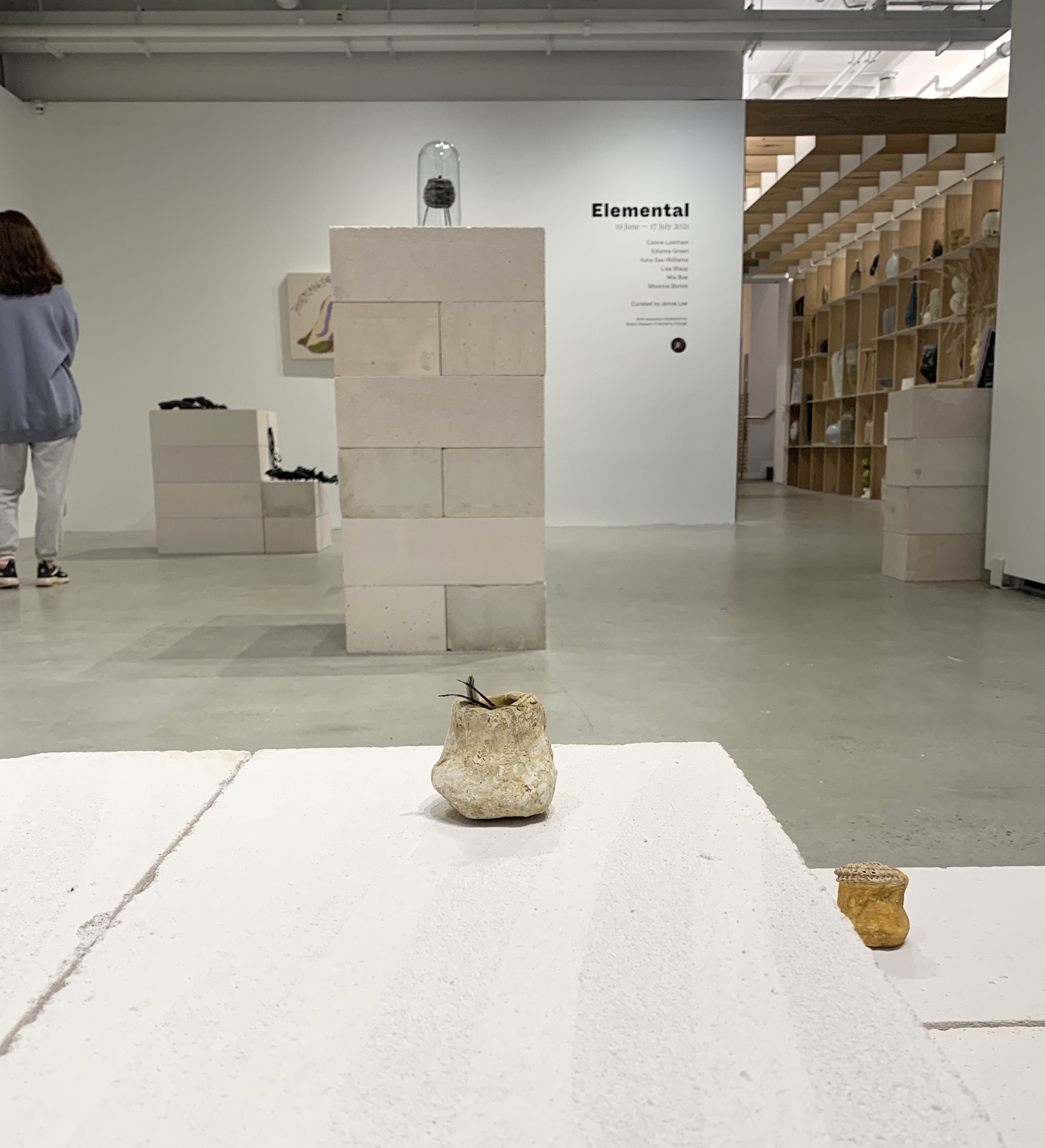
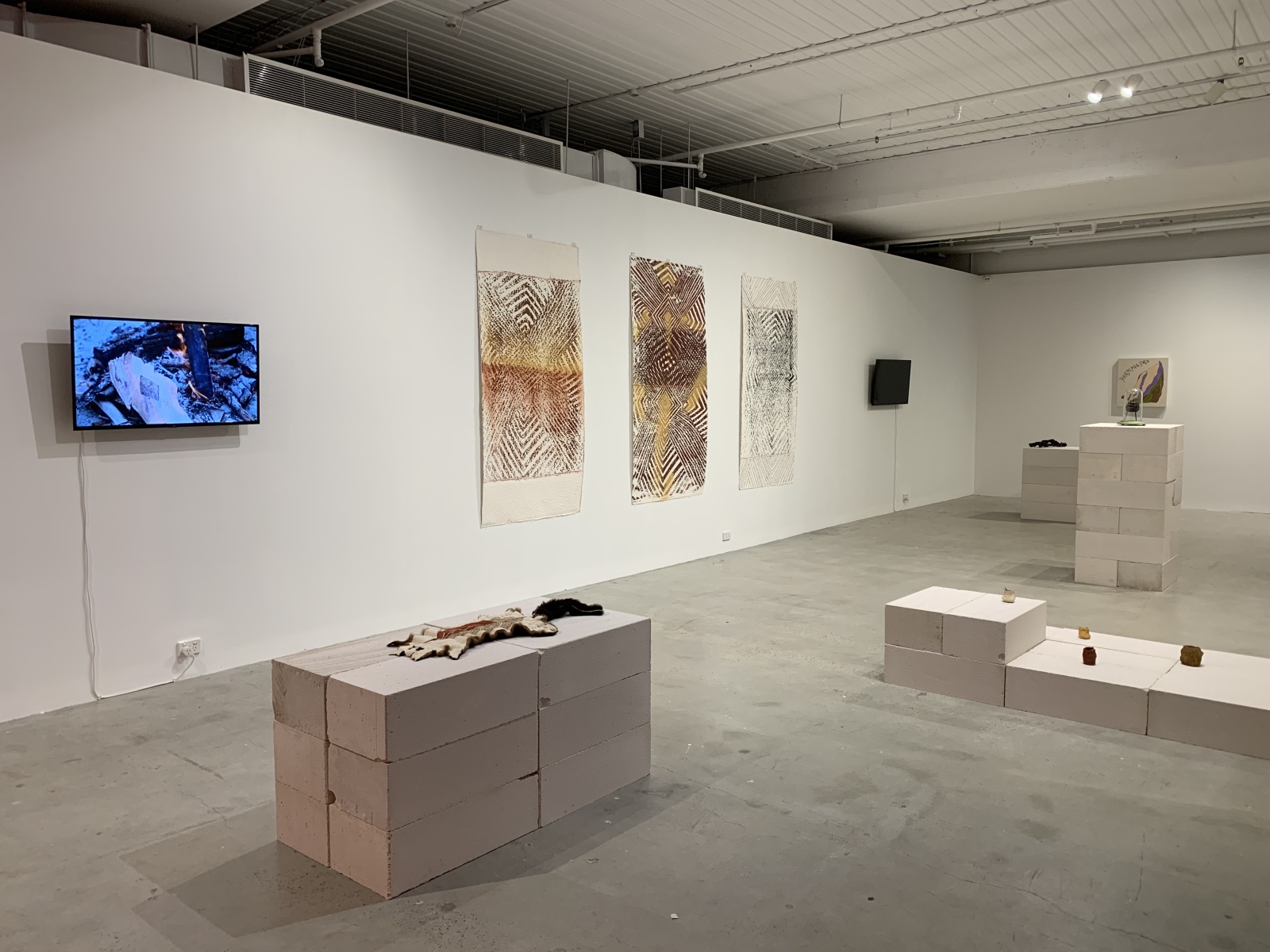
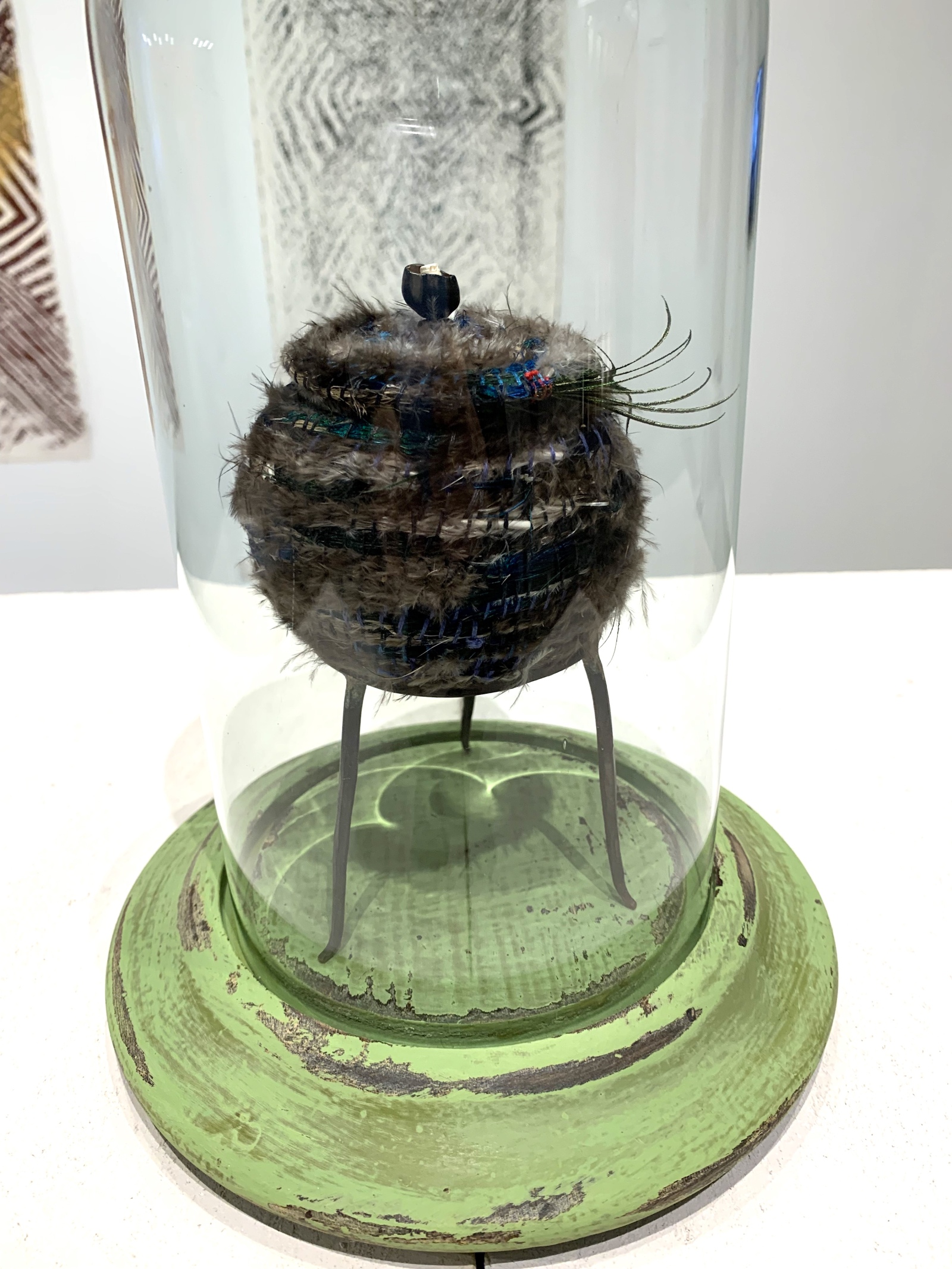
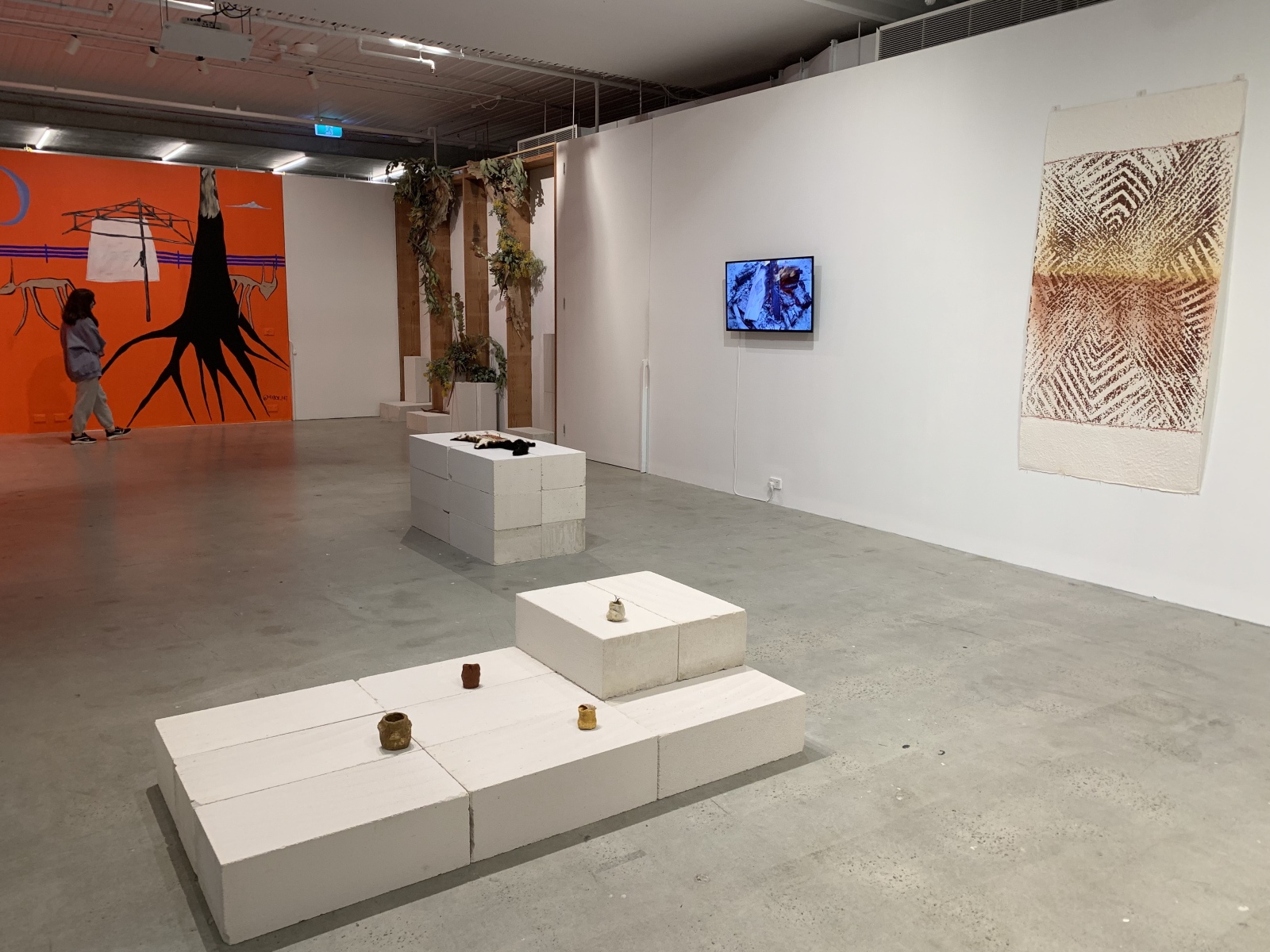
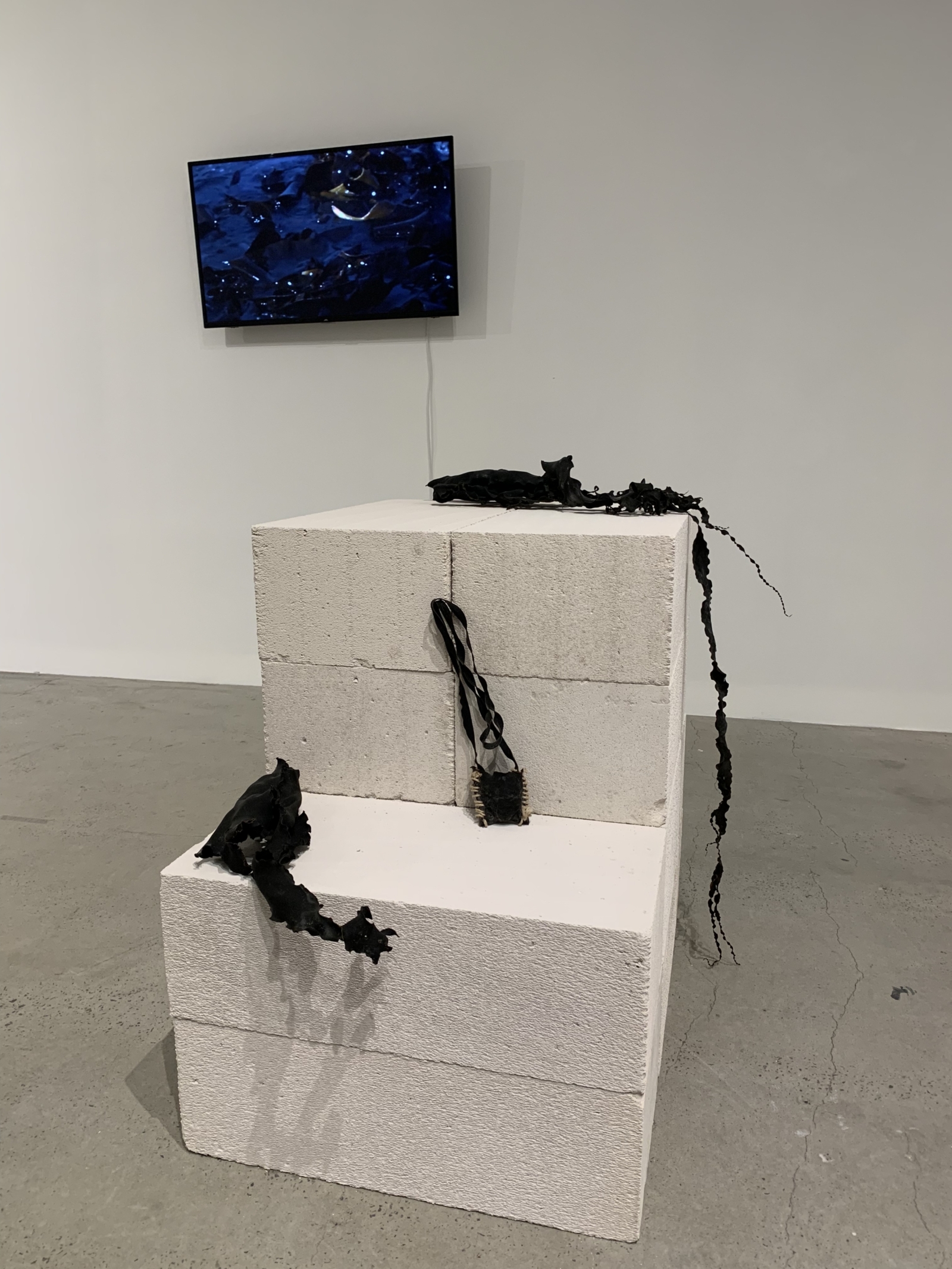
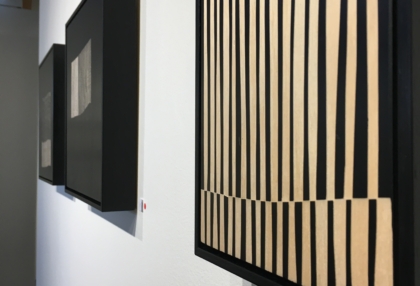
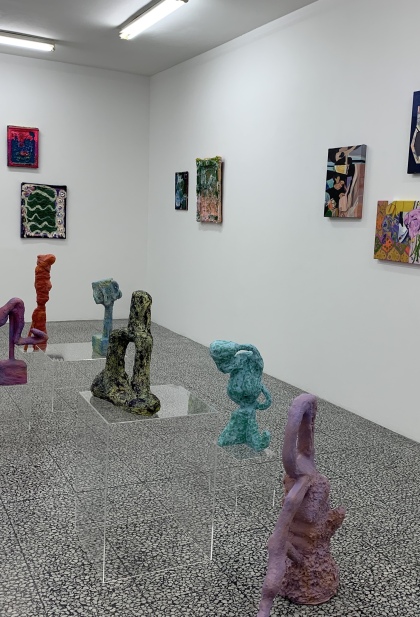
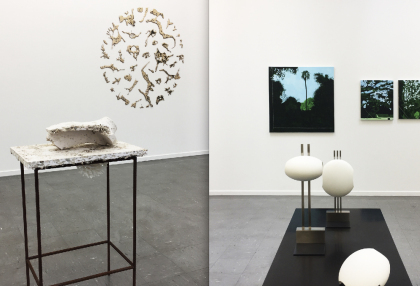
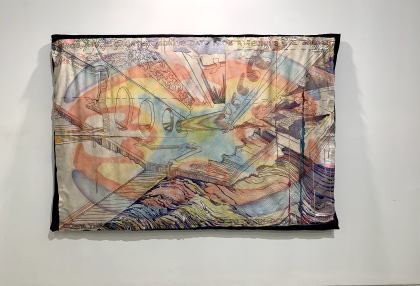
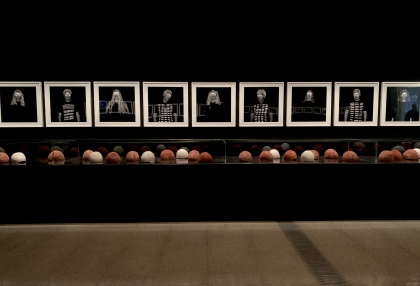
No Comments